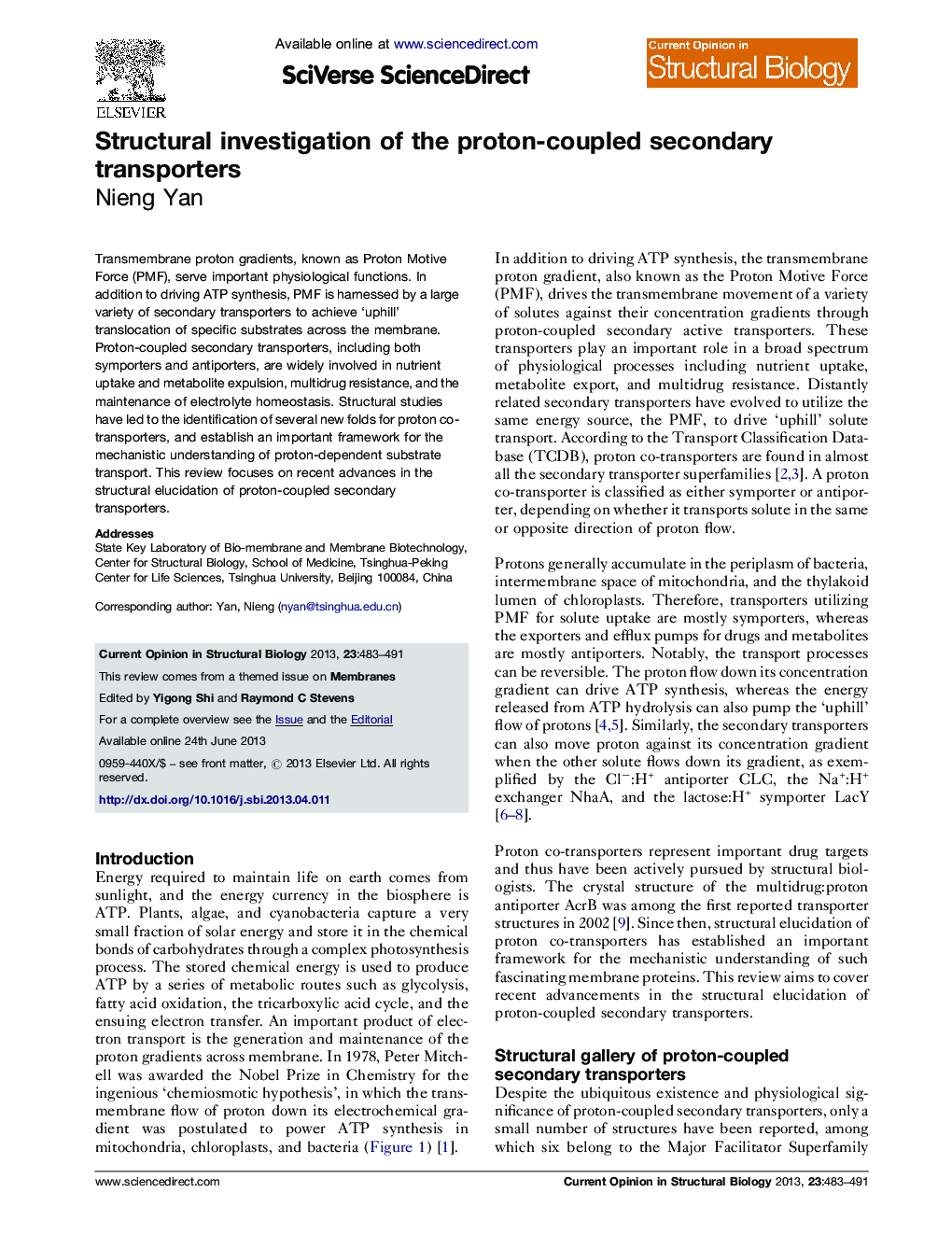| Article ID | Journal | Published Year | Pages | File Type |
|---|---|---|---|---|
| 1979298 | Current Opinion in Structural Biology | 2013 | 9 Pages |
•Many secondary transporters exploit PMF for ‘uphill’ translocation of substrates.•Proton co-transporters exhibit several distinct structural folds.•Substrate binding site is clearly identified in a number of proton co-transporters.
Transmembrane proton gradients, known as Proton Motive Force (PMF), serve important physiological functions. In addition to driving ATP synthesis, PMF is harnessed by a large variety of secondary transporters to achieve ‘uphill’ translocation of specific substrates across the membrane. Proton-coupled secondary transporters, including both symporters and antiporters, are widely involved in nutrient uptake and metabolite expulsion, multidrug resistance, and the maintenance of electrolyte homeostasis. Structural studies have led to the identification of several new folds for proton co-transporters, and establish an important framework for the mechanistic understanding of proton-dependent substrate transport. This review focuses on recent advances in the structural elucidation of proton-coupled secondary transporters.
